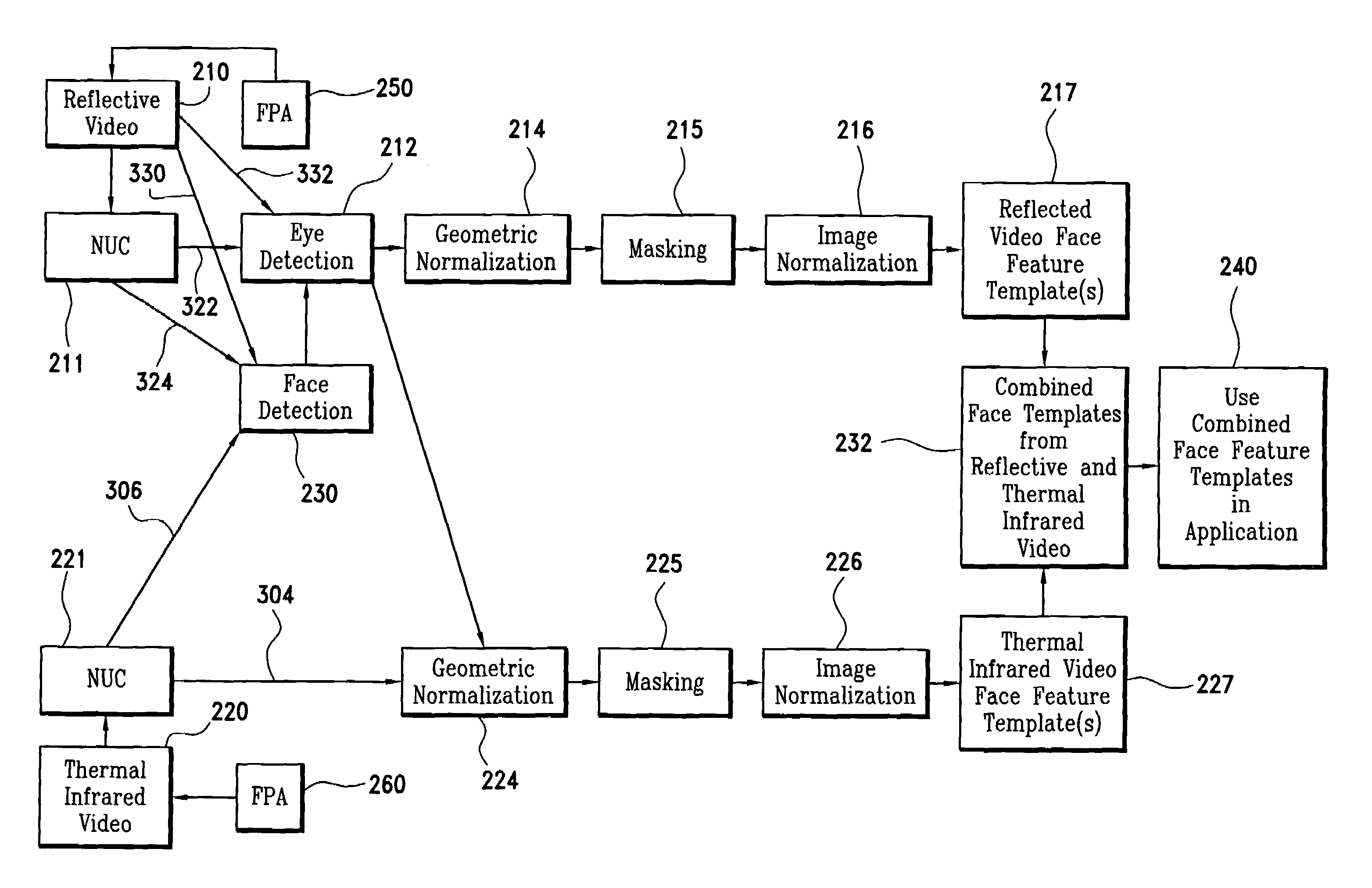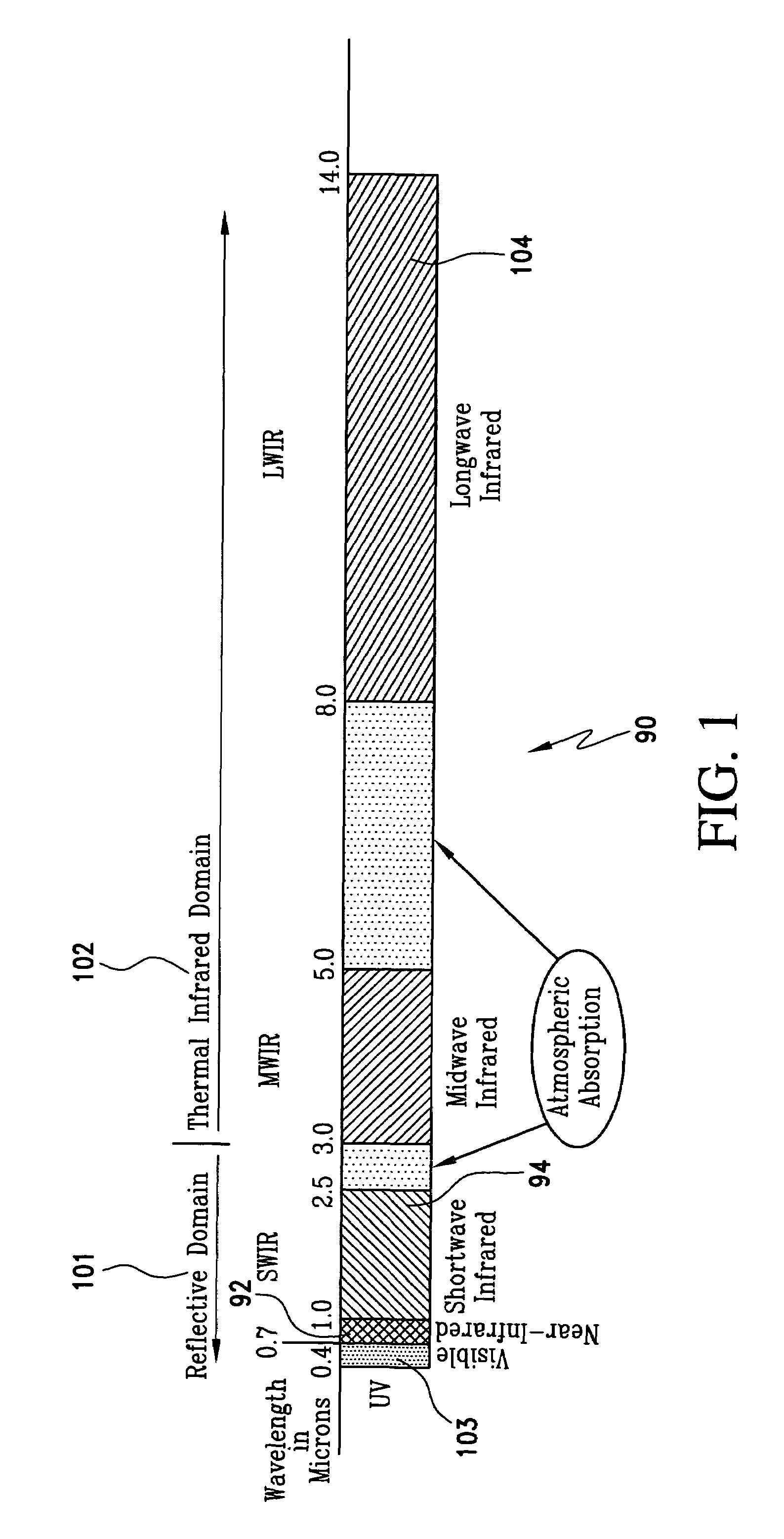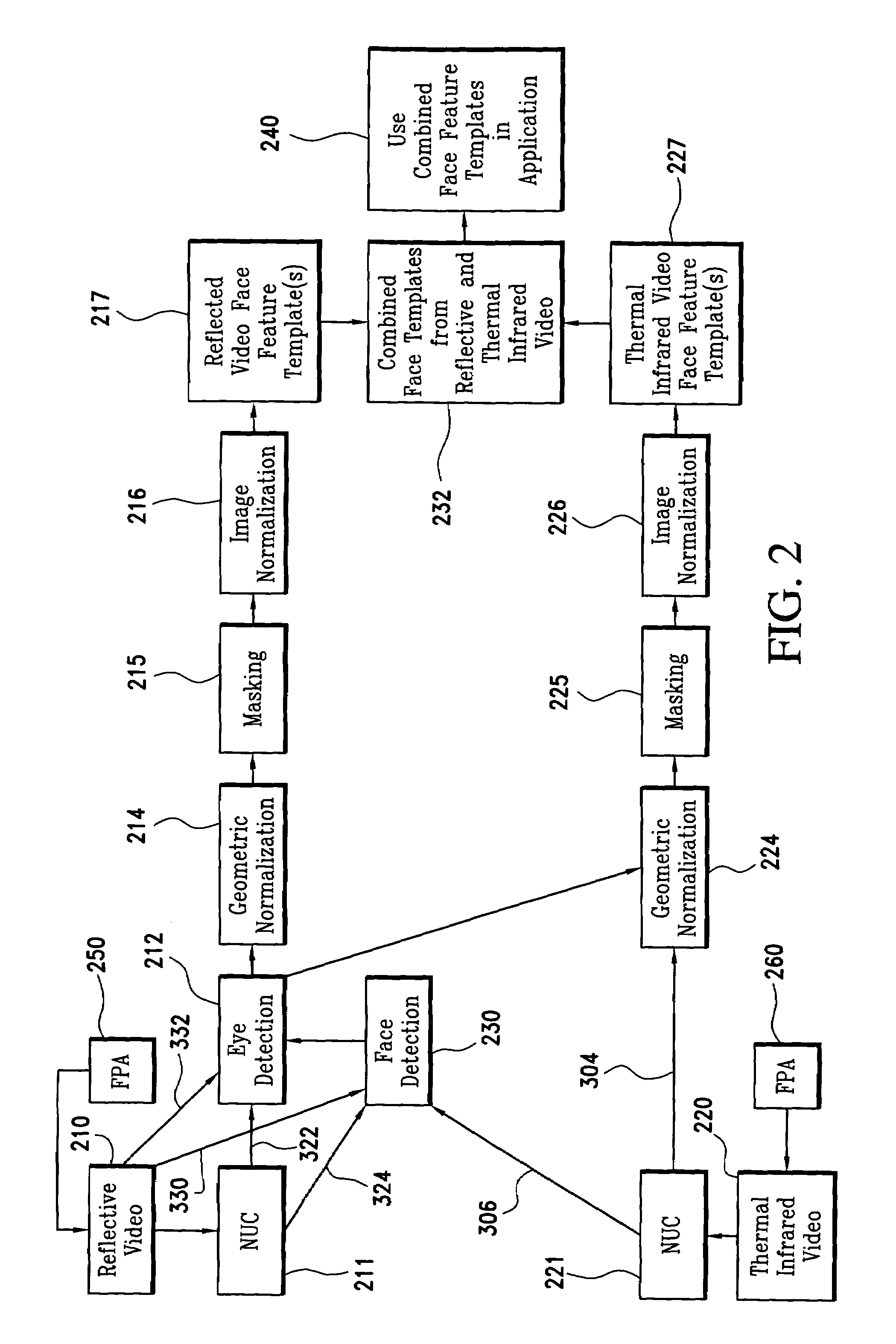Method and apparatus for using thermal infrared for face recognition
- Summary
- Abstract
- Description
- Claims
- Application Information
AI Technical Summary
Benefits of technology
Problems solved by technology
Method used
Image
Examples
Embodiment Construction
[0019]It should be noted that the term infrared as used in the literature does not always refer to thermal infrared, and in fact as shown in FIG. 1 by the spectrum 90 there are important imaging sub-spectrums of the infrared spectrum that primarily record reflective phenonmenology, such as the near-infrared 92 and the shortwave infrared 94 (SWIR). Image fusion described herein refers to fusion of images taken from a sub-spectrum of the reflective domain 101, and a sub-spectrum of the thermally emissive (i.e., thermal infrared) domain 102 as specified in FIG. 1.
[0020]FIG. 2 illustrates a face recognition system 200 receiving two video imaging streams 210 and 220 from suitable sensors or cameras 250 and 260, respectively. One of the video imaging streams 210 is produced from sensing in the reflective domain 101, while the other video imaging stream 220 is produced from sensing in the thermal infrared domain 102. In a preferred embodiment, the reflective video stream 210 is in the visi...
PUM
 Login to View More
Login to View More Abstract
Description
Claims
Application Information
 Login to View More
Login to View More - R&D
- Intellectual Property
- Life Sciences
- Materials
- Tech Scout
- Unparalleled Data Quality
- Higher Quality Content
- 60% Fewer Hallucinations
Browse by: Latest US Patents, China's latest patents, Technical Efficacy Thesaurus, Application Domain, Technology Topic, Popular Technical Reports.
© 2025 PatSnap. All rights reserved.Legal|Privacy policy|Modern Slavery Act Transparency Statement|Sitemap|About US| Contact US: help@patsnap.com



